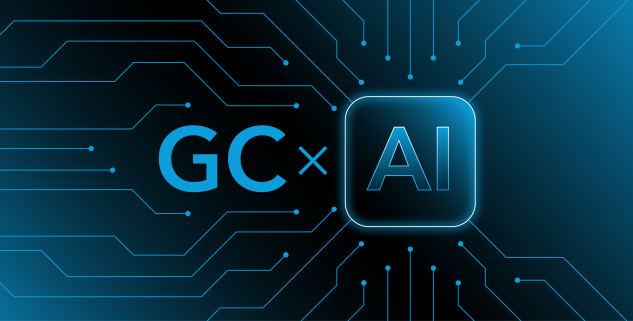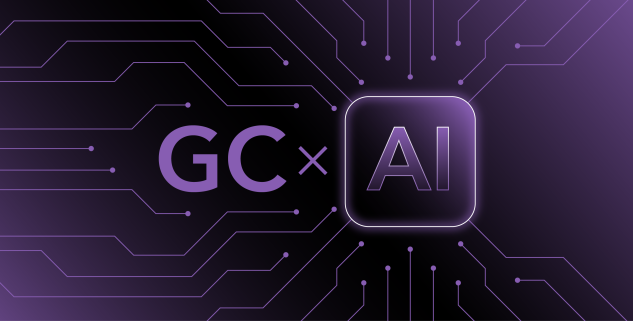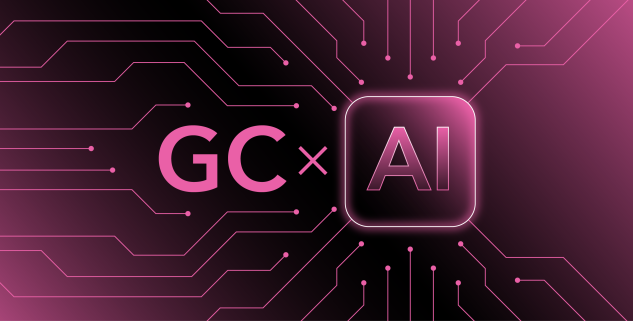With the transformation of in-house legal departments already underway, we also face a profound disruption of the relationship between corporate legal teams and outside counsel. AI will fundamentally reorganize the legal services market, creating new competitive dynamics that will redefine how legal work is structured, priced, and delivered.
For general counsel, understanding these market shifts will be a key element in building sustainable outside counsel strategies and positioning legal departments as drivers of enterprise value. Those decisions will inevitably shape what the legal market of the future looks like.
The External Partnership Evolution
AI’s potential to restructure the law firm industry creates both opportunities and challenges for strategic partnerships between in-house and external counsel.
When both sides of the lawyer-client relationship are AI-enabled, the economics shift dramatically. McKinsey reports that companies optimizing data and applying AI effectively have unlocked cost reductions exceeding 30% in selected functions.
Some analysts suggest that 30% to 60% of current billable work could be compressed by AI—making hundreds of millions of billable-hour revenue vulnerable to displacement. Early estimates suggest that generative AI could lower overall law-firm rates to clients by 25% once routine drafting, research, and document review tasks are standardized across platforms.
But the more profound impact may be AI’s role in reshaping the competitive landscape of legal services. My sense is that we’ll see AI put an even greater premium on deep specialization and the kinds of expertise or resources that are essential for issues that truly matter—whether in litigation, transactions, or regulatory advice.
The Hollowing
This dynamic could lead to a hollowing out of the middle market in legal services. At one end, smaller or regional firms that are aggressive on rates may become more attractive for handling routine matters.
Even with AI enablement, some work—such as specialized IP work or regulatory filings—is still best handled by outside counsel but remains rate-sensitive by nature. These firms can leverage AI to deliver quality work at competitive prices. Indeed, one GC shared with me that their IP firm acknowledged the new efficiencies afforded by AI—which, they said, would be reflected in reduced bills. The result of this approach was both reduced legal spend and a strengthened client relationship.
At the other end of the market, the largest firms may find even greater alignment between high-value, high-stakes representations and their premium positioning. When matters genuinely require the most sophisticated expertise and resources, the premium for big firms becomes more justifiable, not less.
This may leave little space for midsize firms. They may not be able to offer the cost efficiency of smaller firms, and may be unable to command the high rates and high-prestige work of the largest firms. The traditional middle market is likely to face the greatest pressure.
The Rise of the Elite Boutique
Conversely, AI may accelerate the rise of elite boutiques. Smaller firms can capitalize on deep benches of talent and specialized expertise without needing the “bodies” traditionally required for large, complex matters.
Consider document discovery and due diligence, historically a volume game requiring teams of typically junior lawyers. When AI can assume much of the work previously handled by arrays of associates, boutiques composed of premium talent become more competitive. They can deliver sophisticated legal services without the overhead structure that traditional scale required.
This suggests that the future legal services market may become increasingly bifurcated: cost-efficient providers leveraging AI for routine work, and premium specialists—whether large firms or elite boutiques—competing on expertise and judgment rather than raw capacity.
New Entrants
AI may also open the door to new entrants. AI-enabled firms, unburdened by legacy cost structures, are already emerging with the promise to use AI to deliver quality advice at massively reduced costs—especially in practices that rest primarily on expert knowledge but not strategic judgment, such as costly but critical due diligence review in M&A transactions or document review in litigation matters.
Offering this work at lower price points is already winning converts from legacy Big Law. As the scope of work from AI-enabled firms expands beyond specialized M&A and litigation work, it should also expand access for smaller businesses that have been priced out of Big Law. Private investment has already begun circling this space, suggesting we may see alternative models gain traction alongside traditional firms.
In addition, the entry of accounting firms into the legal services market may be accelerated by AI tools. Firms such as KPMG, which has had success in the UK legal market and recently entered the US, may find that their at-scale deployment of AI tools fuels their rise as competitors to Big Law—offering clients the cost-efficiency of AI-enablement with the brand equity associated with their marquee names.
The Defensive vs. Transformative Adoption Divide
Large law firms are increasingly touting their own embrace of AI—and being met with client skepticism. Clients’ wariness stems from the economic realities of the traditional firm model. AI is often deployed as an insurance policy to protect billable hours and preserve leverage, rather than to fundamentally reimagine how legal work gets done. Firms market efficiency gains but are seen as retaining pricing structures that benefit them more than clients.
The result is a credibility gap: Clients are increasingly asking outside counsel whether innovation is pursued to improve outcomes or simply to defend margins. In contrast, many in-house teams—unencumbered by hourly billing and closer to business strategy—are better positioned to adopt AI as a genuinely transformative force.
Legal departments have incentives to reimagine workflows, build self-service tools, and integrate legal insights into enterprise platforms. As expectations for transparency and measurable impact accelerate, this divergence will widen—and define which firms remain trusted advisers.
Strategic Implications for General Counsel
For GCs, this restructuring creates both opportunities and challenges. We’ll have more choices for cost-effective routine work, but we’ll need to be more strategic about when and how to deploy premium legal resources. The middle-market firms that many companies have relied upon as a compromise between cost and capability may become less attractive options.
Anticipating this shift, future-facing law firms are already piloting joint AI-powered platforms that facilitate client-counsel collaboration and knowledge sharing. These platforms deliver gains beyond efficiency—enabling both new knowledge partnerships and stronger client-firm relationships.
For legal AI platforms, this shift creates a new value proposition. Instead of selling separate efficiency tools to each side, they’ll sell collaboration itself—marketing to firms on their ability to deepen client partnerships, and to clients on their ability to integrate more effectively with outside counsel.
The legal services market that emerges from this AI transition won’t be just more efficient—it will be fundamentally different. The legacy firms that survive and the new entrants that emerge will be those that recognize AI isn’t just a tool for doing the same work faster and continuing to bill the same way. The winners will see AI as a catalyst for reimagining what legal value looks like.
Rather than AI replacing lawyers, it may give birth to entirely new forms of legal collaboration between in-house teams and outside counsel. In deciding what value and collaboration look like in this new world, general counsel will be the fulcrum of this transformation.
This article does not necessarily reflect the opinion of Bloomberg Industry Group, Inc., the publisher of Bloomberg Law, Bloomberg Tax, and Bloomberg Government, or its owners.
An immaterial amount of this content was drafted by generative artificial intelligence.
Author Information
Eric Dodson Greenberg is executive vice president, general counsel, and corporate secretary of Cox Media Group.
Read the Series
GCs, Look Beyond Automation. Al Will Spark Legal Team Reinvention
AI represents a fundamental transformation, requiring GCs to reimagine legal practice and their role as strategic business partners.
‘Off-Label’ AI Uses Can Expand In-House Team’s Reach Beyond Legal
AI tools can be a capacity multiplier, broadening legal teams’ reach within their businesses while drastically reducing costs.
This AI Superpower Earns a Voice at the Legal Strategy Table
Legal teams should lean on AI’s ability to see patterns in strategy that lawyers might miss, while leaving the judgment to humans.
The Modern GC Can Embrace ‘Legal R&D’ to Shed Cost Center Label
GCs should embrace “Legal R&D” as a new strategic capability accelerated by AI, and powered by legal operations.
The ‘Steampunk’ GC Can Lead the Legal AI Cultural Transformation
Open-minded GCs don’t have to be seasoned technologists to drive AI adoption—and may be especially effective at addressing resistance.
With AI, Junior Lawyers Will Excavate Insights, Not Review Docs
Junior attorneys will harness AI’s power to alter the early career experience, while applying the structured skepticism attorneys value.
Write for Us: Author Guidelines
To contact the editors responsible for this story:
Learn more about Bloomberg Law or Log In to keep reading:
See Breaking News in Context
Bloomberg Law provides trusted coverage of current events enhanced with legal analysis.
Already a subscriber?
Log in to keep reading or access research tools and resources.






